[ VC&G Interview ] Brian Parker on RetroZone and the PowerPak NES Flash Cart
August 7th, 2007 by Benj Edwards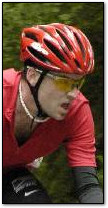 Brian Parker, a resident of Redwood City, CA, has run RetroZone full time for three years. His company is well known in the retrogaming community for its sales of original console controllers — like NES, SNES, and Genesis control pads — modified to work with the USB ports found on modern computers. In 2005, I reviewed one of his USB NES controller products and found it to be excellent (I still use it regularly, in fact). But it was with the new PowerPak NES flash cartridge in mind that I interviewed Brian via email last month.
Brian Parker, a resident of Redwood City, CA, has run RetroZone full time for three years. His company is well known in the retrogaming community for its sales of original console controllers — like NES, SNES, and Genesis control pads — modified to work with the USB ports found on modern computers. In 2005, I reviewed one of his USB NES controller products and found it to be excellent (I still use it regularly, in fact). But it was with the new PowerPak NES flash cartridge in mind that I interviewed Brian via email last month.
Also an avid cyclist, Brian gave me a picture of him competitively riding a racing bicycle, the only known picture of him in existence. Ok, I’m kidding — but it is him.
Thanks for the interview, Brian.
[ Update (11/02/2007): Click Here to read our review of the RetroZone PowerPak flash cart. ]
An Email Interview with Brian Parker
RetroZone’s Success
VC&G: How long have you been running RetroZone?
Brian Parker: 3.5 years, started Dec 2003. Many times I thought the business was over but it has only been growing.
VC&G: Why did you start RetroZone?
BP: After making the first USB NES controller for a friend’s Christmas present I decided other people would likely want the same thing.
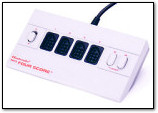 VC&G: What was your first RetroZone product?
VC&G: What was your first RetroZone product?
BP: The original USB NES RetroPad was the first, quickly followed by the USB SNES RetroPad.
VC&G: Have you made a significant amount of money from your RetroZone sales?
BP: It is enough to live on, certainly not as much as I could make as a computer engineer at a big company. The lack of a defined schedule is nice but the manual work is getting extremely boring.
VC&G: What is your best selling product so far? How many have you sold?
BP: Over 8000 NES RetroPads have passed through here. That is way too much button cleaning!
The PowerPak NES Flash Cartridge
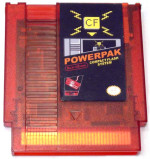 VC&G: What inspired you to create the PowerPak flash cart?
VC&G: What inspired you to create the PowerPak flash cart?
BP: The same friend that wanted the USB NES RetroPad saw my NES cart collection (about 400 carts at the time) and wanted all of it on one cart. I had heard of GBA flash carts but had no idea the NES version would be so hard or take so long.
VC&G: Did you design the PowerPak flash cart yourself?
BP: Yes. All the hardware is my design. Maybe some of those college classes were useful! Digital hardware is what I like doing, and I have a few more hardware ideas for the NES.
VC&G: How long has the PowerPak been in the works?
BP: Started working in Jan 2006. Most of the architecture work was finished quickly, but doing the mappers and FAT handling has taken a long time. Lots of time is also spent just waiting for the prototype boards to be built.
VC&G: How many hours have you put into development of the PowerPak?
BP: At least 1000 hours for just development so far. I didn’t keep track of it because it wasn’t paid work yet. There will be at least 100 more hours of development and production before the next batch is ready.
VC&G: Why do you think that no one has developed a NES flash cart for sale before now?
BP: Many people have tried, only to find out that it is hard, takes a long time, and costs lots of money. Every new prototype board is another $300-400 and I have done at least 4 of them. The idea is pretty simple but the NES cart architecture makes it far more complex than any other system.
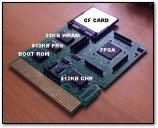 VC&G: In technical terms, could you describe how the PowerPak Flash Cart works?
VC&G: In technical terms, could you describe how the PowerPak Flash Cart works?
BP: The NES can only access 32KB of game code. Games quickly became larger than that so “memory mapper” chips were designed to swap in banks of code and graphics. Systems like Atari 2600 also use bank switching mappers but the NES has many more and much more complex mappers. There are over 100 mappers, about 30 in the USA game set. Each mapper has to be recreated in hardware perfectly or some games will fail or have glitches.
Every time a game is loaded, the correct mapper design is programmed from the CF card into the FPGA. That big expensive chip is more than 1/4 of the board cost and the reason other people have been unable to make a NES flash cart. Loading from the CF card means the mapper design can be updated as bugs are found. More mappers can also be implemented.
The rest of the game code and graphics is loaded from the CF card into RAM on the PowerPak board. From there the game is started and the NES just runs it normally.
VC&G: You mentioned on your site that the Flash Cart would not work on NES clone systems like the Generation NEX. Why not?
BP: Clone systems are not a good enough clone for the PowerPak to work. Some have timing issues, some do not have a big enough power supply, and systems like the NEX are broken by design. They all use cheap NOAC (NES on a chip) chips instead of recreating the NES system correctly. That is why some games like Castlevania III do not run on some. The NEX even has bad cart slot wiring with the slight chance of damage if you plug in a game like Gauntlet. If you can’t tell, I don’t like the clones very much.
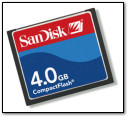 VC&G: Why did you choose to go with the Compact Flash format as storage media for the PowerPak instead of a more popular or smaller format like Secure Digital?
VC&G: Why did you choose to go with the Compact Flash format as storage media for the PowerPak instead of a more popular or smaller format like Secure Digital?
BP: Compact Flash is the only parallel card, instead of serial like SD, MMC, Memory Card, Picture Card, etc. The NES is the bottleneck so using a serial card would be 10x slower for game loading. Instead of 5 seconds to load it would be more like 50 seconds. That delay is not worth the very slight cost difference. The memory card is entirely inside the NES cart, so size does not matter.
VC&G: How many games can the PowerPak recognize on a flash card? Could you, for example, put the entire NES library on a CF card and choose any one to play (assuming the games are compatible)?
BP: The biggest CF card someone has tested is 8GB. That holds every known version of every NES/Famicom game about 4 times! The USA collection is approximately 256MB. Average game is under 300KB so even a small card can hold a few hundred games.
VC&G: Programming the mapper functionality into an FPGA chip sounds like it was probably a lot of work. How much time did you spend developing that and did you get any help?
BP: That was a very large part of the 1000+ hours. The simple mappers take a couple minutes but I am still working out bugs in some of the complex ones. Most of the hardware is fairly well documented by people like Kevin Horton who have done it first, but I did have to dig through some emulator source to see what they are doing.
 VC&G: Have you heard anything from Nintendo yet about your PowerPak products? Do you expect to? Any worries about legal trouble from Nintendo at all?
VC&G: Have you heard anything from Nintendo yet about your PowerPak products? Do you expect to? Any worries about legal trouble from Nintendo at all?
BP: I do not expect to hear from them either way. While they probably don’t like the idea, I don’t believe there are any laws being broken. I will never distribute ROMs, and I am not using any of their IP. All the patents and design patents are long expired, which is how some of the clone systems are now legal.
VC&G: Some people have complained about the high cost of the PowerPak, currently at $135. How would you answer those complaints?
BP: I generally ignore any comments about price. Typically they only come from people who have no idea what things actually cost, or are simply not interested anyways. The 1000 hours at typical engineer rates becomes $75K+, the prototype boards is another couple thousand, having to buy everything like cases in huge lots means another $10K spent. That doesn’t even include the board cost and fabrication time. While I am certainly going to eventually make money from this, it isn’t like a $10 product that I am marking up. After the first batch I have almost made half minimum wage for 1.5 years work.
Even at $135, the PowerPak is cheap. Other systems like Atari have more simple flash carts at $200 (and no, I am not saying those are over-priced either). The first production Nintendo DS flash carts were $150 and have far fewer components and much less design time. They are only cheaper now because they are made in the hundreds of thousands instead of just hundreds.
VC&G: The RetroZone site says the PowerPak flash carts are “Temporarily Unavailable.” Does that mean you’ve sold out your initial run already? How many units were in the first run, and how long did it take to sell out?
BP: The first batch of ~80 carts sold out in around 2 days. Obviously the “high cost” isn’t a real problem!
VC&G: When can we expect to see more PowerPak flash units in stock?
BP: Next batch of ~250 boards has been ordered and should be here beginning of August. After that I should be able to keep a constant supply.
VC&G: I noticed that you’re selling a PowerPak Lite RAM cart as well, for use with a CopyNES system. Care to comment about that at all? Was it easier to design than the flash cart?
BP: The PowerPak Lite is a project meant for very fast cycle development. That was a far easier product to design because it only supports a couple simple mappers. I had already designed the mappers for the PowerPak, so the work was done. Kevin Horton already did the hard part of creating the CopyNES system.
VC&G: Is there anything else you’d like to add or clarify about the PowerPak products that we haven’t mentioned?
BP: Thank you for spelling PowerPak correctly! It is amazing how many people get it wrong like Power Pack, PowerFlash, FlashPak, etc. It is very important for things like search engines. Also somewhat insulting when people can’t bother to get the name correct.
Future RetroZone Products
VC&G: Are there new RetroZone products in the pipeline — perhaps flash carts for other systems, or maybe a fully assembled CopyNES-like system?
BP: Right now I am focusing on the NES and trying to get more homebrew there. Eventually my PowerPak architecture might make it to other systems. First on the list is a cart for playing FDS games on the USA NES, a USB CopyNES, and a few of my own homebrew games. Right now is more bug fixes and upgrades for the PowerPak.
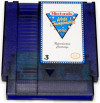 VC&G: You’re selling a reproduction cart of the NES World Championships 1990 now. Do you have any plans for more reproductions in the future?
VC&G: You’re selling a reproduction cart of the NES World Championships 1990 now. Do you have any plans for more reproductions in the future?
BP: I may be doing more reproductions, but they will all be complete with manuals and maps instead of the typical cart only repros now. I will never destroy old games to make repros now that there are new parts.
More than that I want to produce more homebrew titles like Sudoku. AtariAge has a large collection of new Atari games but there are almost none for the NES. Hopefully tools like the PowerPak and my ReproPak pcb boards will help people get through the hardware part of development.



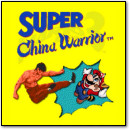
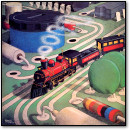
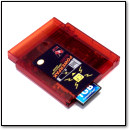
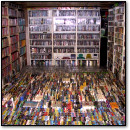
August 8th, 2007 at 11:16 pm
Great article, I’ve been beggin my girl to let me buy one of these things for two months now… I want one so bad!
August 9th, 2007 at 10:31 pm
He’s not kidding. The NES is strange. I made a reproduction of Final Fantasy II on top of a copy of Zelda. I hated tearing that copy apart. If he could press boards that accepted EPROMs or he could make mapper chips and leave the pressing to people like me, it would be awesome and I would make carts like Mario Adventure (I already am considering it but I don’t really want to ruin a perfectly good copy of Mario 3… though Zelda may work as well).
P.S. I plug my NES games into a NES-to-Famicom adapter which plugs into my NES-dedicated Famicom. I got tired of the toaster breaking every 100 or so cartridge inserts. I have another Famicom that I use for Famicom and FDS games. Both under the TV and share the same connections. Bought them both “broken” really cheap. Two consoles previously destined for the trash fixed with five minutes and a soldering iron. Hooray!
August 9th, 2007 at 10:34 pm
OMG. HE DOES SELL THE PARTS I DESIRE!
Thank you RedWolf. I will be purchasing parts from this humble vendor.
August 9th, 2007 at 11:35 pm
Awesome, Keith. I’ve often been tempted just to use my AV Famicom as a NES with a converter, but don’t have a NES to Famicom converter for the job. Of course, I won’t need to change carts very often anymore if I ever get a PowerPak myself.
By the way, DahrkDaiz said in an interview I conducted with him last year that Mario Adventure won’t work on a real NES because of specific emulator tricks he used. It’s bummer — it would be great if either he could fix it or someone else could patch it to make it work on a real NES.
August 11th, 2007 at 12:19 am
would be great a cartride wich you can insert flashcart,s with nes roms, and play them on a nes, very ideal to put pirated nes games on it, like supermarioworld donkeykongcountry etc,,,or create your own nes games and play them on a real nes pretty cool,maybe it,s even possible to convert all your movies,mps into nes format (through converter) and run them on the real nes.
i also hope that those powerpaks will be upgradeble through usb for fixing manny bugsand that it also will be compatible with pal neses.
,m excited!!!!!!!!!!
August 11th, 2007 at 11:24 am
That’s a real bummer! Mario Adventure would rule on a console.
Mario Adventure would rule on a console.
By the way, I have a tip for you. If you ever do get a converter, and it’s a “Family Converter 60-72PIN” model.. Don’t use it on your main system, or if you do, never *ever* remove it. I ruined one Famicom’s cartridge slot because of my converter. The board is just a little bit too thick, so it barely fits in the slot. After repeated use, it wouldn’t pick up anything anymore because some pins got pushed in too far.
All of that said, the PowerPak looks like a great investment. I can’t wait to see homebrew stuff like Grand Thefttendo come out. The other thing that would be nice is if he had the time and machinery needed to be a game publisher. So homebrewer #1 gives him $100 and he makes, oh, 10 games or so, and sells them on his website. Something like that, you know?
August 11th, 2007 at 11:33 am
Thanks for the tip about the converter, Keith.
By the way, from all I can tell, RetroZone is planning on becoming the AtariAge of NES homebrews. They already have a section devoted to new games and reproductions. The first original game they’ve got is “Sudoku 2007,” but it’s out of stock at the moment.
September 4th, 2007 at 10:57 am
Hi Benji, on your interview it’s been said more PowePaks we’ll be available at beginning of August, but Brian still have on his site Temporarily Unavailable.
I guess you may have any contact with him, so, Do you know if he already sold out the stock or I should keep waiting to get one PowerPak?
Thank you
abe
September 4th, 2007 at 1:15 pm
Abe,
Thanks for writing. I wish I knew myself when they’d be available, but Brian has been rather uncooperative in that regard, refusing to give me any further tips or heads ups about when they’d be for sale again. For all I know, they might have gone on sale for an hour and recently and sold out. I’d ask him, but I have the feeling he’d ignore me.
Keep in mind that he has to build all the units himself by hand, so he might be in a little over his head right now.
September 4th, 2007 at 3:57 pm
Hey Benji, Thank you for respond me, I think you’re right at all bud!
I’m really excuse myself asking you this again, but, Does the stock he mentioned on you enterview, has been already sold out and when?
Or we should be keep waiting for that stock?
Abe
September 4th, 2007 at 4:58 pm
Abe, I don’t know if it has been sold out. Either way, just keep waiting and new stock should be ready eventually (assuming of course that he doesn’t stop making them).
September 5th, 2007 at 9:04 am
Ya están vendiendo el PowerPak, APURENSE A CONSEGUIR EL SUYO COÑO!!!
Right Now Brian has PowerPaks on stock, GET ‘EM ALL!!!
Abe
April 4th, 2008 at 9:56 am
pues deberia de publicitar su producto para que asi todos esten interesados en adquirir uno.
los altos coste de fabricacion se deben a una mala planeacion del producto el mismo nes es prueba de ello. uso tecnologias baratas y creo una super consola.
January 6th, 2011 at 3:32 pm
Does anyone know where I can sell the Original Nintendo. the Nintendo has all its components with the exception of the original flap and gun. It has the original Super Mario Game and Duck Hunt game with one game controller. please let me know email me at rcgarcia2891@yahoo.com
March 21st, 2011 at 11:31 am
Hey Benj,
I am 3 years late and fearing the worst….no more production. I’ll paypal you $25 just to find out if he is going to be making more! Not kidding, email me!
I really want a powerpak and am absolutely astounded at this Mr. Parker’s amazing work. As a businessperson, I hope he is thriving because of this product. I hope he brings it to mass market and gets rich–I’d invest!
Thanks (late) for conducting the interview, and keeping all of us in the loop with new things old.
January 27th, 2013 at 11:06 pm
can i buy one with all the games already downlaoded on a flash card